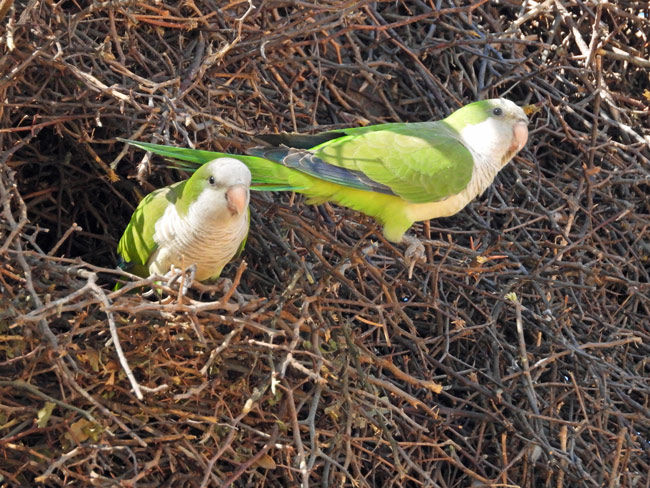Zero Macaws: Good Data, Bad News
- LoraKim Joyner
- Sep 16, 2025
- 3 min read
Updated: Sep 17, 2025

In August I journeyed to the north of Paraguay up near the Bolivia border, passing through Agua Dulce and then heading both north and west in search of parrots. Specifically, we were in search of information about the status of three large species of macaws (red-and-green, blue-and-yellow, and hyacinth macaws) that occur in the Cerrado ecosystem .
We saw zero large macaws.

Map of South America showing the location of Agua Dulce, Paraguay which we passed through on our way looking for macaws
We had heard stories that the macaws were there, and indeed, this area is within the range of all three species. We only had five days to do a quick survey, ask questions, and listen to stories. Our hope was that it was enough to begin a parrot conservation project in this area. Paraguay needs more parrot conservation sites to protect these species, and others.

Our team on the way to Agua Dulce (Diana, LoraKim, Pamela, Armando)

A stopover in Agua Dulce, Paraguay for supplies
There are all kinds of possible reasons for seeing no large macaws. Maybe we were just unlucky, were there at the wrong time of the year when their numbers are lower, and we did not go walking off of the dirt roads and ranches. This was only a very brief visit and not an exhaustive study. Still we were practiced parrot counters and stopped whenever we saw or heard parrots.

On the Bolivian border with help from the World Wildlife Fund and
the Commander of the local army base

When we visited several ranches we shared our parrot conservation project and results, and asked about the presence of parrots. The cows were particularly interested in our work.
Given that we heard many stories from local residents of how parrots were trapped here and sold, and that when people did see macaws (only red-and-green macaws) they only saw 2 – 4 occasionally, we felt that our zero reflected a serious dearth of large psittacines (parrots) in this area, especially in terms of what once might have been here.

We did see other parrots, such as the smaller yellow-collared macaw (above) and
the monk parakeet (below). These species of parrots can live close to humans and
their disturbed habitats.


To add to this disappointing news were the August nesting results of our primary conservation site in the Cerrado ecosystem further south in Concepción, Paraguay. Every nest we checked in August was empty of macaw chicks. Another zero. Now in September we have a handful of active nests with chicks or eggs, but this is much lower than our usual number of nests and they are present later in the year than in previous years.

Thin two-week old red-and-green macaw chick in a nest in mid-September
in our conservation area
To offset this depressing situation I shared with our team how in parrot monitoring a zero is good data. It tells us that the target species is not present in significant numbers. It spurs us to accept reality, to look in more places, and to understand what is happening to the parrots. It is boring and disappointing to get a zero, but this is reality and it is information.

Sharing the reality of the parrot crisis with our team in northern Paraguay
So our zeros spur us on to work harder. If anyone tells me it can’t be done or it is hopeless, this is like throwing a glove down as a challenge. Giving up on the reality of the situation is not an option. Instead the hard truth calls forth commitment.
Forward into northern Paraguay we will go. We are scrambling to figure out how to get people there to do a more extensive survey, become witnesses to the reality, and find partners who wish to protect their parrots and to repair and "re-parrot" the land.
There is zero chance that we won´t try.
Unfortunately many places have zero macaws, and the wild declining populations are part of the parrot crisis. If you'd like to help to increase the chance for parrots to fly free around the world, please join the International Alliance for the Protection of Parrots and attend our Parrot Crisis Action Summit on September 19, 2025 (free of charge).




Comments